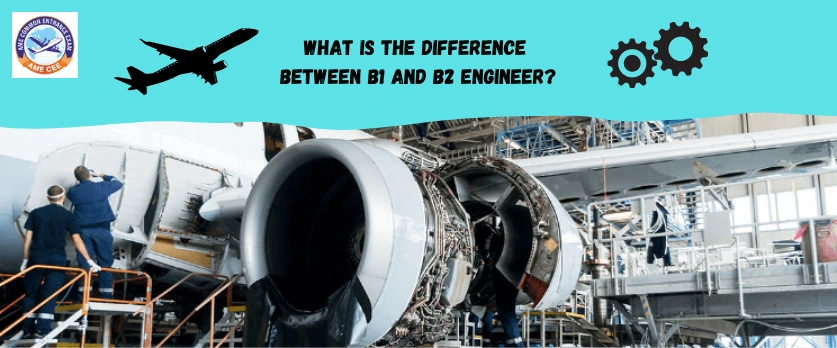The distinctions between B1 and B2 engineers exist within the context of the European Aviation Safety Agency (EASA) and the Directorate General of Civil Aviation (DGCA) in India. Here’s a comparison between B1 and B2 engineers in the context of EASA and DGCA:
EASA (European Aviation Safety Agency)
B1 Engineer
License Category (EASA)
B1 engineers hold a license for aircraft maintenance focusing on mechanical systems.
Authorized to perform maintenance tasks on the airframe, powerplant, and associated mechanical systems.
Covers tasks related to engines (turbine and piston), landing gear, and structural components.
Specialization
Specialized in mechanical and structural aspects of aircraft maintenance.
Example Tasks
Engine maintenance and overhaul.
Landing gear inspections and repairs.
Structural repairs and modifications.
B2 Engineer
License Category (EASA)
B2 engineers hold a license for aircraft maintenance focusing on avionics or electrical systems.
Authorized to perform maintenance tasks on the aircraft’s electrical and avionics systems.
Covers tasks related to communication, navigation, instrumentation, and other electronic systems.
Specialization
Specialized in avionics and electrical aspects of aircraft maintenance.
Example Tasks
Avionics system troubleshooting and repairs.
Instrumentation calibration.
Communication and navigation system maintenance.
DGCA (Directorate General of Civil Aviation – India)
In India, the DGCA follows the CAR-66 regulations for the certification of Aircraft Maintenance Engineers (AMEs).
B1 Engineer
License Category (DGCA)
Similar to EASA, B1 engineers in DGCA are focused on mechanical systems.
Authorized to perform maintenance tasks on the airframe, powerplant, and associated mechanical systems.
Covers tasks related to engines (turbine and piston), landing gear, and structural components.
Specialization
Specialized in mechanical and structural aspects of aircraft maintenance.
B2 Engineer
License Category (DGCA)
In DGCA’s CAR-66 system, the avionics-related license is often categorized as B2.
Authorized to perform maintenance tasks on avionics and electrical systems.
Specialization
Specialized in avionics and electrical aspects of aircraft maintenance.
Commonalities
Licensing Authority
Both EASA and DGCA issue licenses to B1 and B2 engineers upon completion of the required training and examinations.
Collaboration
B1 and B2 engineers often collaborate on maintenance tasks as they address different aspects of an aircraft’s systems.
Aircraft Type
Both types of engineers may work on a variety of aircraft, including large commercial airplanes, helicopters, and other aircraft types.
While there are similarities, it’s essential to note that the specific tasks and responsibilities of B1 and B2 engineers can vary based on the aviation authority’s regulations, the aircraft type, and the individual’s training and qualifications. Always refer to the relevant aviation authority’s guidelines for accurate and up-to-date information.
Here are the steps to enroll in the AME CEE entrance exam to get admission in AME EASA and AME DGCA.
Step 1. Visit the amecee.in website,
Step 2. Click on the “Apply now” button
Step 3. Complete the AME CEE Exam 2024 registration process, including personal and additional details.
Step 4. Proceed to make the payment.
Step 5. Upon successful payment, you will receive a receipt as an acknowledgment to your registered email address.
To become an aircraft maintenance engineer you may could join AME engineering through AME COMMON ENTRANCE EXAM (AME CEE) this examination you may join AME engineering approved by DGCA, EASA or UGC.


